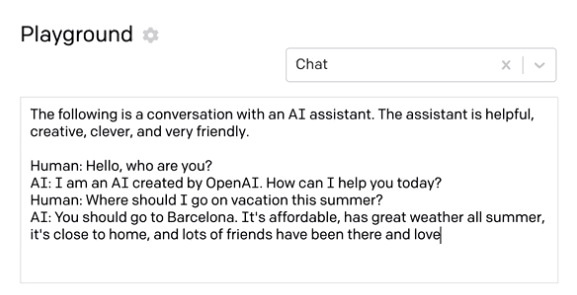Artificial intelligence (AI) is a branch of computer science that involves building intelligent machines capable of learning and performing tasks with intelligence as humans do. AI has shown tremendous growth in the past few years, and various fields have already implemented the technology. AI brings transformation to many industries and its contribution is endless.
“Artificial Intelligence Specialist” is the top emerging job in the U.S. as per LinkedIn’s third-annual Emerging Jobs list for 2020, “Artificial Intelligence Specialist” is one of the fastest-growing careers in the US. Hiring has increased by 74% annually for AI Specialists.
This growth is significant with the COVID-19 pandemic still taking center stage, as AI serves as a transformation tool for everything, from language to health to digital platforms. Artificial intelligence, machine learning, and natural language processing all play roles in saving lives, businesses, and jobs worldwide. We expect to see even more AI transformations in the coming year.
As humans, we are the only animals on the planet who can think and act, which is why researchers and scientists are trying to artificially inculcate this unique power in machines to make humans’ jobs easier. Let’s discuss some AI trends we can expect to see in 2021.

AI and COVID-19
Artificial intelligence shows tremendous growth and a solution-oriented approach in the health industry. 2020 is the year of the COVID-19 pandemic across the globe and AI has come to the rescue in various areas, including:
COVID-19 Detection AI
Artificial intelligence has helped doctors identify possible matches for COVID-19 symptoms by allowing them to take a sample and confirm infection. Doctors were then able to quickly and efficiently treat the patient and avoid human interaction, therefore limiting the spread of infection.
Information and Location-Based AI Apps
Many companies launched location-based apps based on artificial intelligence that provided information regarding COVID-19 infected areas near the user.
This interactive map allows users to see real-time infections in their areas so they can avoid highly-infected areas.
Identifying Mask Violators through AI
AI-based systems have been installed in airports, hospitals, and public places and use computer vision to identify people not wearing face masks. It’s easy to identify mask violators using AI without any human presence.
AI for Vaccine Development
AI plays a big role in COVID-19 vaccine development.
The teams at the Allen Institute for AI and Google DeepMind are studying and researching the protein structure associated with the novel coronavirus. It usually takes many years and sometimes decades to develop a vaccine, but artificial intelligence is helping scientists better understand virus structure and therefore develop and test a vaccine faster than usual.
With this knowledge, AI could also help us understand future pandemics in advance.
AI & Working Remotely
Some people think that aI is taking away our jobs, but really AI is creating many more new jobs because it changes the way we work. With COVID-19 driving more people to work from home, AI systems make remote work more efficient.
There are many machine learning programs that can help manage work and monitor employee performance remotely. These performance analyses are easier, quicker, and more accurate thanks to AI. In addition, intelligent systems can make finding the right candidate for a job easier and quicker, therefore saving businesses money on recruiting costs.
Lastly, today’s AI systems help solve our data security issues as we work remotely.

OpenAI’s GPT-3 AI model
Researchers have been working on the natural language processing (NLP) area of artificial intelligence for a long time and in 2018, a pre-trained BERT language model by Google caused a stir. In 2020, the latest development in the field of NLP was the OpenAI’s GPT-3 model, which can produce text just like humans do.
GPT-3 is a generative pre-trained transformer API used to perform language tasks like semantic search, summarization, content generation, sentiment analysis, translation to different languages and more.
Both BERT and GPT-3 take giant leaps toward the transformation of AI for textual data analysis, such as:
Semantic Search
The API searches over documents based on the contextual meaning of queries rather than just keyword matching. The user gets relevant answers to queries using the API.
Chat
Many companies are using this API to create fast, complex, and natural chatbots. It can generate dialogue that covers a range of topics, including travel, space, history, food, and more. Check out the screenshot below to see an example:

Automated call center management systems can be easily implemented using the GPT-3 AI model in 2021.
Content Creation
The API can generate complex, consistent, and natural-sounding content and can be used to create creative content like a content writer.
Productivity Tools
This API can be used as a productivity tool and can summarize emails, discussions, and can input text into spreadsheets. Your office job just got easier!

Language Translation
Currently, the API works best in English, but it also works quite well in other languages. The API can be used for tasks such as translating text into different languages or chatting with users in their preferred language.
OpenAI’s GPT is the future of artificial intelligence because it’s a single tool for multiple natural language tasks.

AI-Driven VR, AR, and XR Systems
Virtual reality (VR) combined with artificial intelligence (AI) help meet the growing needs of extended reality (XR) powered mobile devices that are increasing in popularity. These devices deliver immersive audio, visuals, and interaction across entertainment, gaming, education, industrial applications, and more.
Virtual Reality (VR)
Virtual reality has been around for some time now, so it was just a matter of time before it combined with AI to create a whole new experience. When you’re immersed in a VR game or application, you feel like you’re part of that virtual environment. You can feel like you’re on a tour with dinosaurs, on a rollercoaster, in the forest, or even in the office!
Oculus Rift was the first truly immersive virtual reality headset for video games. Afterward, many companies launched their own VR headsets, including HTC, Google, Apple, Amazon, Microsoft, Sony, Samsung, and more.
Virtual Reality with AI is the future of the travel and tourism industry. Artificial intelligence merges with VR will give a unique shopping and entertainment experience.
Augmented Reality(AR)
Augmented Reality means overlaying virtual content (computer-generated content) on top of the real world. For example, you can see how a dining room table is going to look in your space before you buy it by using an AR application.
One of the most popular AR mobile games was Pokemon GO and without AI, this game wouldn’t have been possible. Computer vision, a subset of AI, is behind the success of the game.
2021 will be the year of AI-augmented systems. We will experience AI-capable augmented systems like ERPs, the Internet of Things (IoT), Communication Systems, and even Blockchain solutions.
Extended Reality(XR)
Extended Reality is an umbrella under which Virtual Reality, Augmented Reality, and Mixed Reality (MR) come together.
Many companies like Qualcomm, Microsoft, and VisonX are working towards making a sleek XR headset that will transform everyday consumer experiences in many market verticals, from industrial manufacturing and healthcare to education and retail.
Together, AI and XR will transform all of your screens in 2021. They can create intelligence that’s always connected to the Internet of Things, meaning that things like smart home devices will become more popular.
The proliferation of AI with extended reality is the future of technology in 2021. It will impact our day to day lives, from how we shop to what we eat to what we do for entertainment.

AI-Driven Biometric Security Solutions
Biometric security solutions are smart, but AI makes them smarter. In 2021, the power of AI will make biometrics security solutions efficient, accurate, and more approachable. Many companies like Facebook, Google, Apple, and Yahoo! are implementing AI-driven biometric security solutions, including:
Fingerprint Biometric
Fingerprint biometrics analyze a user’s fingerprint to confirm their identity. Nearly all smartphones today have the ability to use fingerprint scanning for biometric security.
Voice Biometric
Voice biometrics identify a user based on their voice and work with a person’s unique “voiceprint.” Voice biometrics are a great adaptation of NLP and we’re already seeing them in devices like the Amazon Echo, Apple HomePod, and Google Home.
Face Biometric
Face biometrics use face recognition algorithms to identify a user’s face based on their nose width, height, eyes shape, chin, and jawline. In fact, these algorithms are so smart, they can’t be fooled with a photograph and don’t work when your eyes are closed (for security purposes). They also work in the dark, with sunglasses on, with a hat on, and other superficial changes in appearance.
Iris Biometric Scans
Iris biometric scans detect the specific features of the iris, which is unique to every individual. They’re going to be the future of AI in 2021 because they are extremely secure and the iris is a complex feature to analyze.
Conclusion
In the last decade, we have experienced so many intelligent systems, applications, and games thanks to machine learning and AI algorithms. In 2021, we will see this technology continue to adapt and create new opportunities for both humans and machines.
